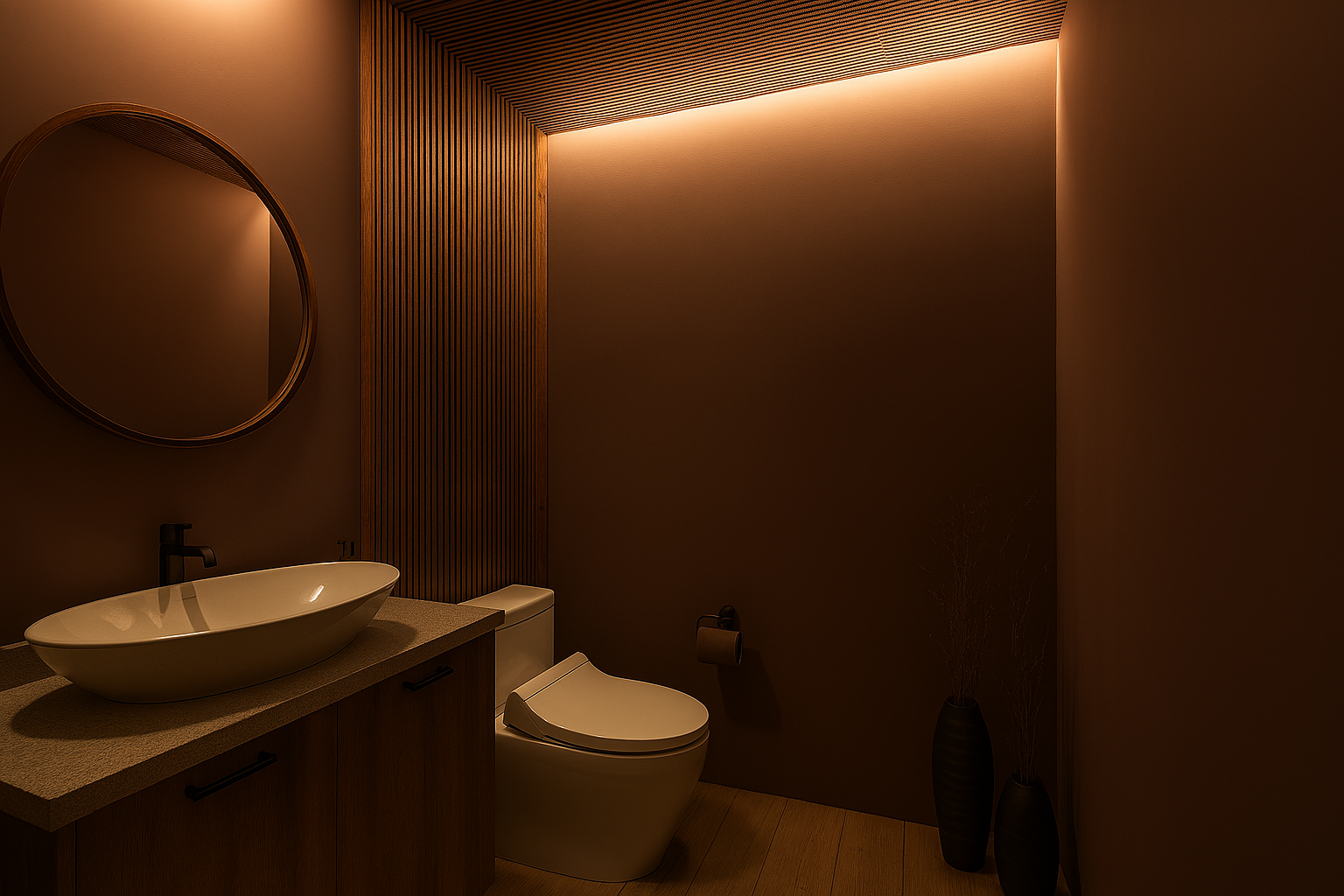How Indirect Lighting Can Transform Your Space to Improve Your Mood and Well-Being. Also, Why It Matters!
Lighting is a key element when designing the atmosphere and function of a space. When I worked as a lighting consultant, I often joined meetings with interior designers and clients to discuss how to bring their spaces to life through light.
During the Interior Design process, many people understand the benefits of having large windows. It brings in natural light and creates a strong connection to the outdoors. That’s definitely a plus. But, what’s often overlooked is how the space feels at night. Not many people considers the absence of natural light after sunset, or the possibility that nearby buildings might block sunlight during the day if you’re in a densely built area, leaving parts of the home gloomy even in the middle of the afternoon.
When we talk about architectural Indirect lighting, it has to be said that it makes a big difference in how a room feels. Instead of shining straight into the space, it reflects gently off the ceiling, walls, or floor, kind of like a soft glow wrapping around the room. It creates a calm, cozy atmosphere that’s easier on the eyes and feels more natural. It’s one of those subtle design details that people don’t always notice right away, but once it’s there, the space just feels more comfortable and inviting.
Let me tell you about two types of indirect lighting that can help bring a relaxing, luxury hotel atmosphere into your home.
-Cove Indirect Lighting-
Cove lighting is a beautiful way to elevate the mood and perception of a space. By reflecting light onto the ceiling, it creates the illusion of a higher, more open room and makes everything feel bigger and airier. It also wraps the space in a soft, uplifting glow that feels like you're surrounded by positive energy. Unlike downlights, which shine directly into your eyes, cove lighting offers a much gentler experience. It’s easy on the eyes and can even mimic the kind of natural brightness you'd find outdoors.
It’s a great choice for minimalist interiors because it keeps the ceiling clean and uncluttered. The lighting feels integrated and intentional, enhancing the space without drawing attention to the fixture itself.
-Cornice Indirect Lighting-
Cornice lighting offers a unique way to illuminate a space. Instead of lighting the ceiling or floor directly, the light is installed near the ceiling or floor and reflected onto the walls, making them appear brighter and more visually dynamic. It’s an especially great choice for wall surfaces with texture, like stone, wood, tile, or even accent wallpaper. The gentle glow enhances the material’s depth and character, creating a warm and inviting ambiance.
Another beautiful way to use cove indirect lighting is by reflecting light onto the floor. This works especially well when the entire space doesn’t need to be brightly lit. Or when you want to create a more subdued, cozy atmosphere. It’s also a smart solution for areas that need just a bit of functional illumination, like lighting for footpaths or steps. Gentle floor reflections help guide movement without overpowering the space, making it feel calm and thoughtfully designed.
In conclusion, indirect lighting can beautifully complement any room or area in your home. It’s a versatile technique that works especially well with interior styles featuring organic textures or spaces designed to feel connected to the outdoors.
Whether it’s soft ceiling glow or gentle wall illumination, this kind of lighting helps create an atmosphere that feels natural, calming, and thoughtfully designed.



